
4-Xtremes – Part 40: Gold mines and night frost for the Kammermanns
Series: 4-Xtremes – The World Tour
At the turn of the year, Andrea and Mike experience a lot of unexpected things in Spain: cathedrals in the icy Atlantic, legacies of the ancient Romans – and sudden frost.
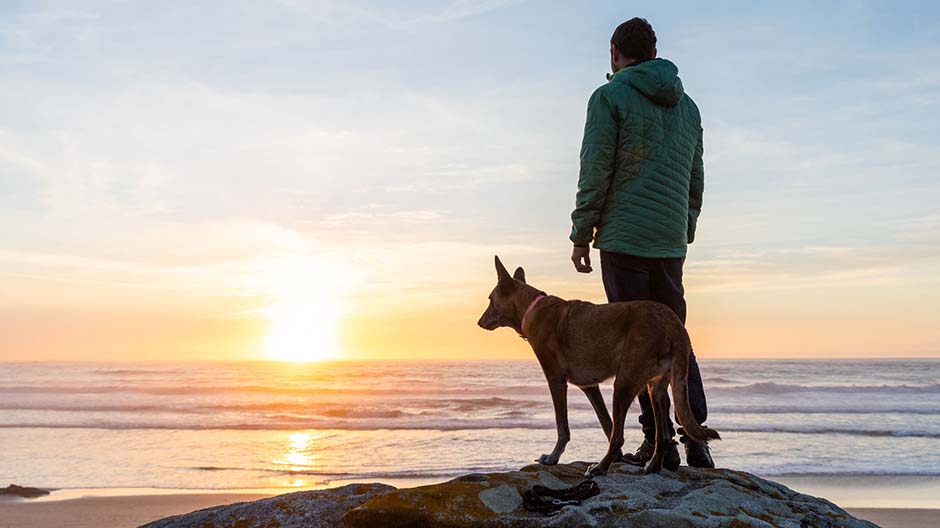
Beyond the horizon. In 2022, the destinations of the Kammermanns will also only become clear in time.
It is time to continue with the next part of our “4-Xtremes – The World Tour”. We hope you have made a healthy and safe start to 2022 – whether at home or at the wheel. We look forward to being your overlander correspondents in the next 12 months as well. The coronavirus situation will probably continue to determine where our journey takes us for a while.
In any case, we are reporting today from the heart of Spain: from a reservoir, not very far away from Madrid. We arrived here from the north-west of the country. On the way, we saw the coast completely change its appearance within just a few kilometres – with the Cabo Touriñán, from where we sent you our New Year’s greetings, as the “turning point”. While the coast is rough and rugged in “up direction”, in other words towards France, it suddenly becomes flat and easily accessible in “down direction” – towards Portugal.
Walking in icy water.
The first destination of this stage was above this turning point: “As Catedrais” beach – the “Beach of Cathedrals”. It is named after rock arches that have been shaped by water and wind. We set our alarm so that we could climb down the steps to the beach early in the morning at low tide. Unfortunately, tides are not always the same – and on this day, the water did not recede enough to clear the way to the cathedrals. So we rolled up our trousers and ventured into the cold Atlantic waters. But at some point the fun stopped and we turned round. Nevertheless, we still managed to take a few photos.
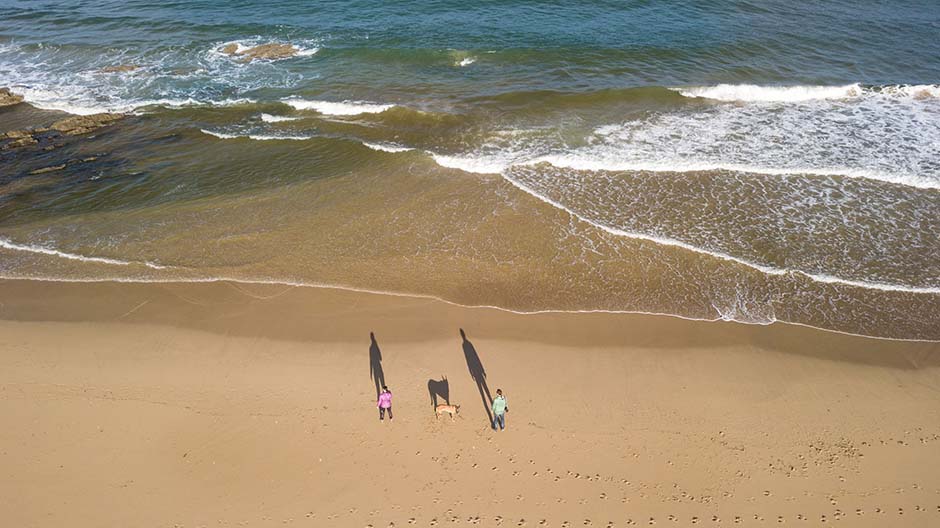
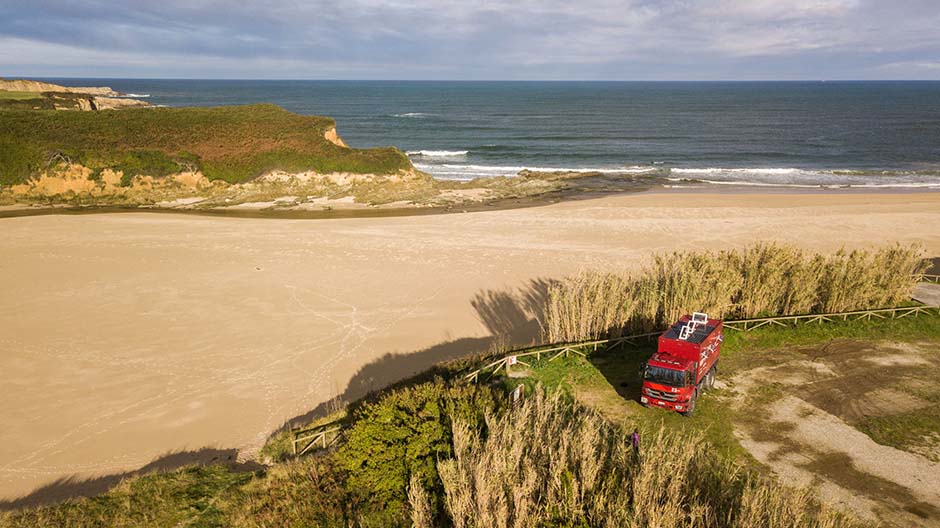
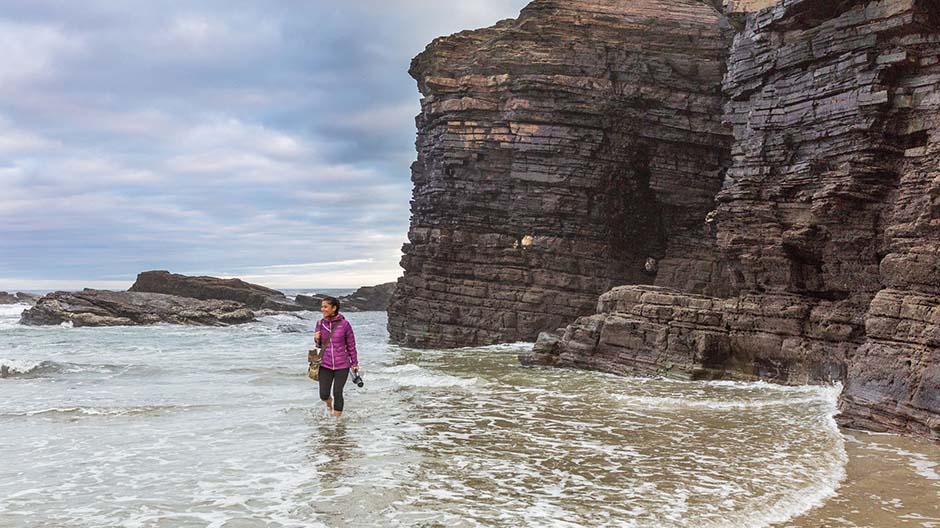
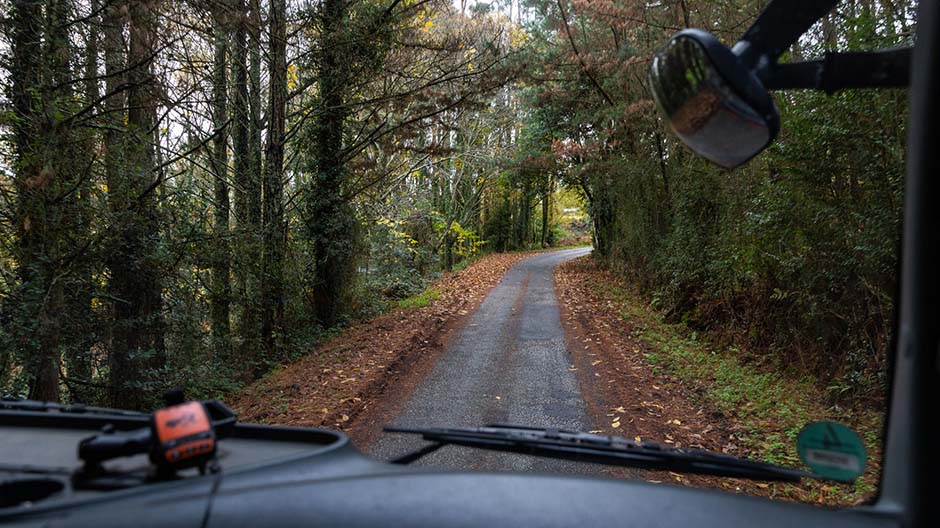
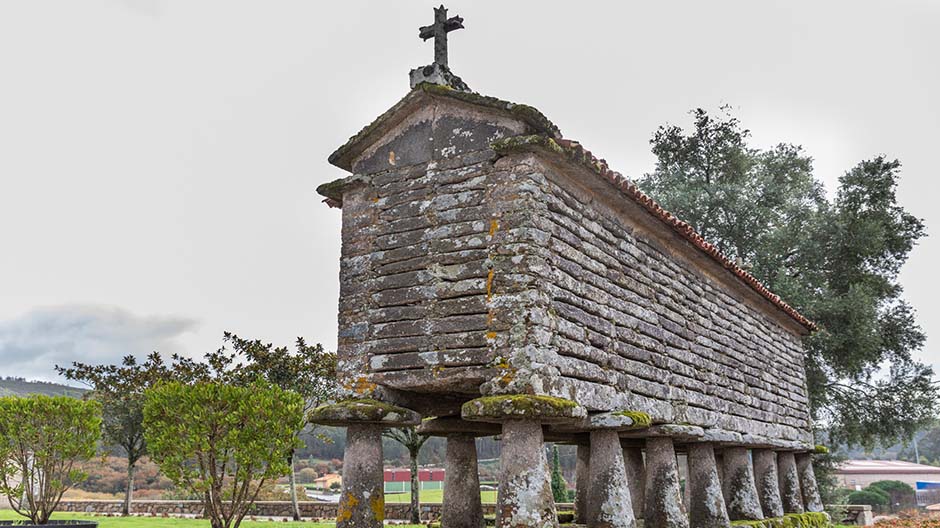
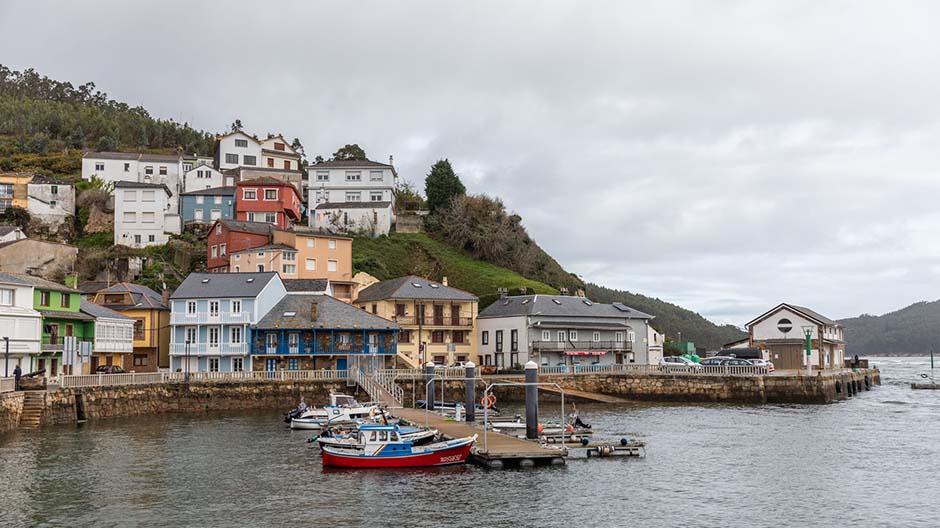
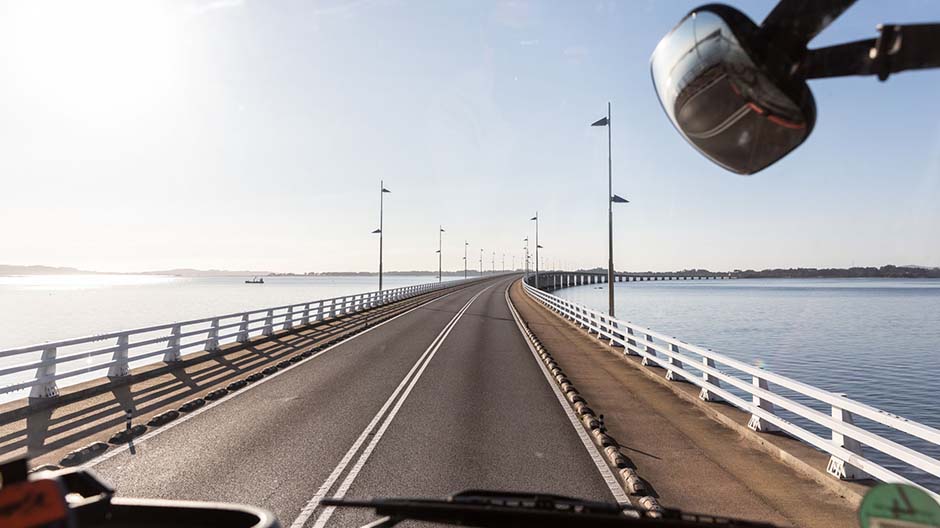
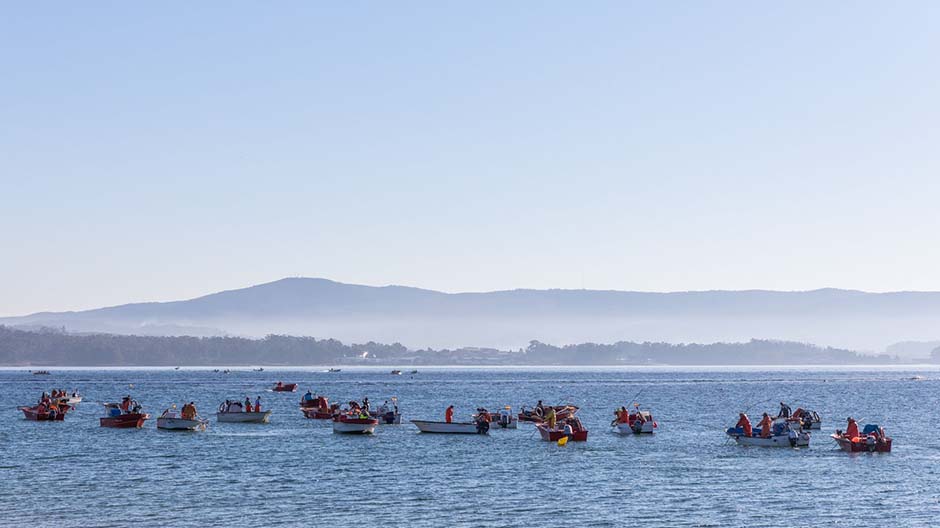
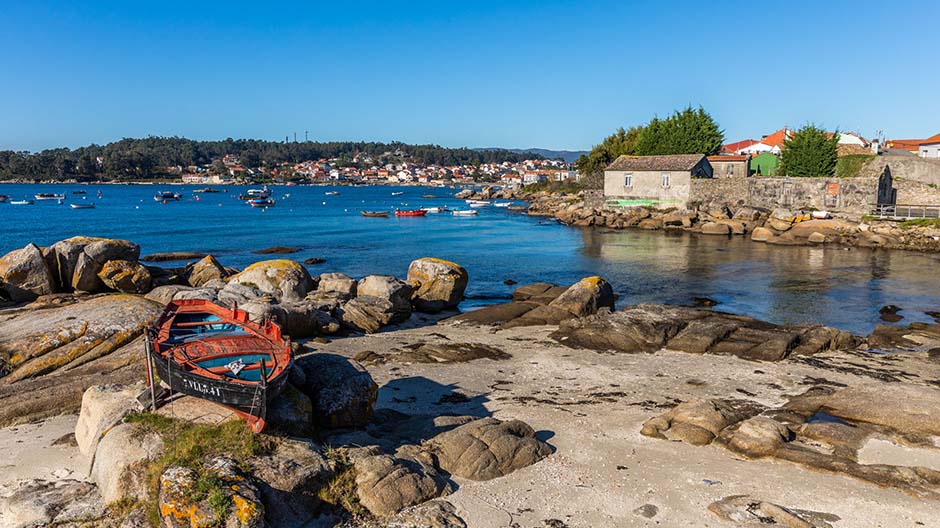
We really wanted to stay close to the coast, but a storm forced us inland for a few days. This turned out to be a wonderful change of scenery, however. We let the engine of the Axor hum on mountain roads, sometimes overgrown with high ferns. And we negotiated our way through villages to admire the hórreos: these are corn stores that are built from granite here in Galicia to withstand the humid climate.
All on our own on the beach.
The weather turned mild as soon as we reached the lower, flat coastal stretch. In fact, this is one of the most beautiful coastlines we have ever seen. It must get crowded here in summer. But now, at the turn of the year, we camped behind the beach without another soul in sight.
The last stop on the coast was Illa de Arousa. It is joined to the mainland by a bridge that is almost two kilometres long. A large number of islanders make a living from mussel farming. This can be observed in the morning when the boats lie in the water off the coast and the fishermen dig for the mussels. A large part of the island is designated as a nature reserve. That’s why we left the Axor behind and explored it by bicycle.
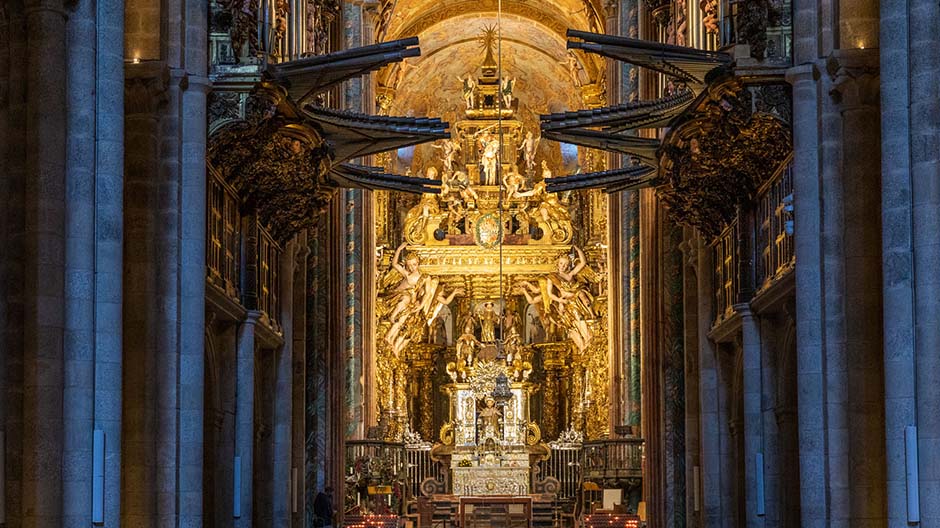
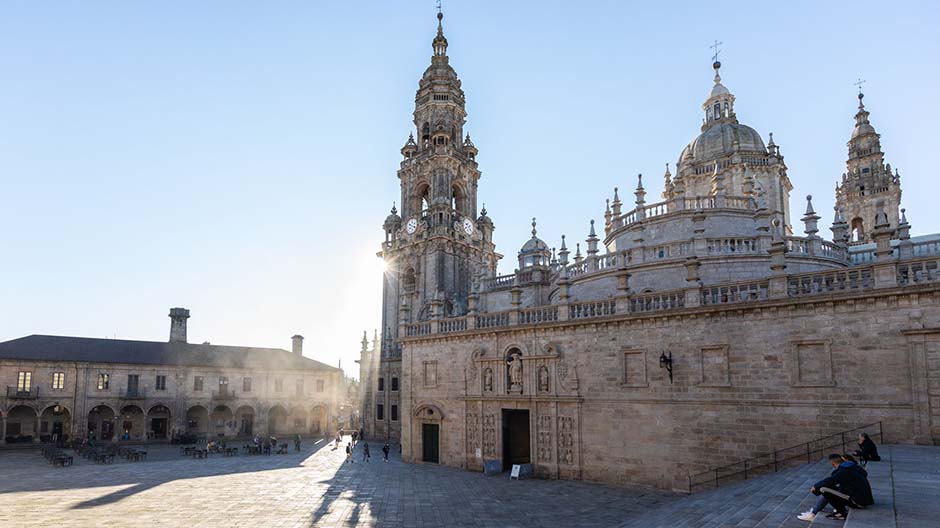
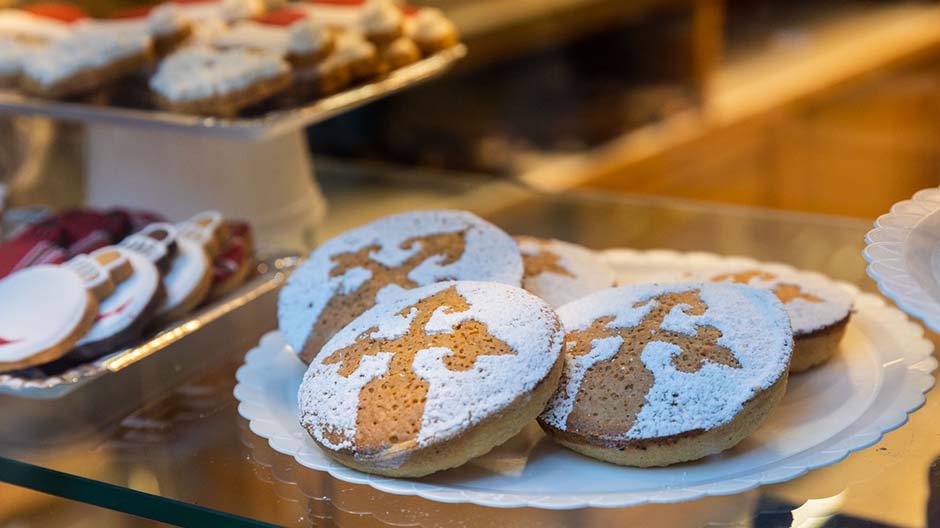
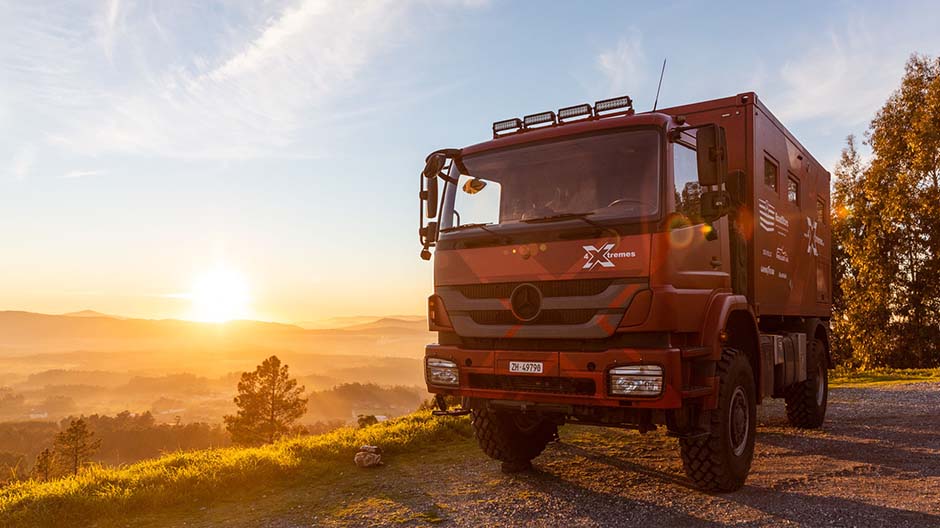
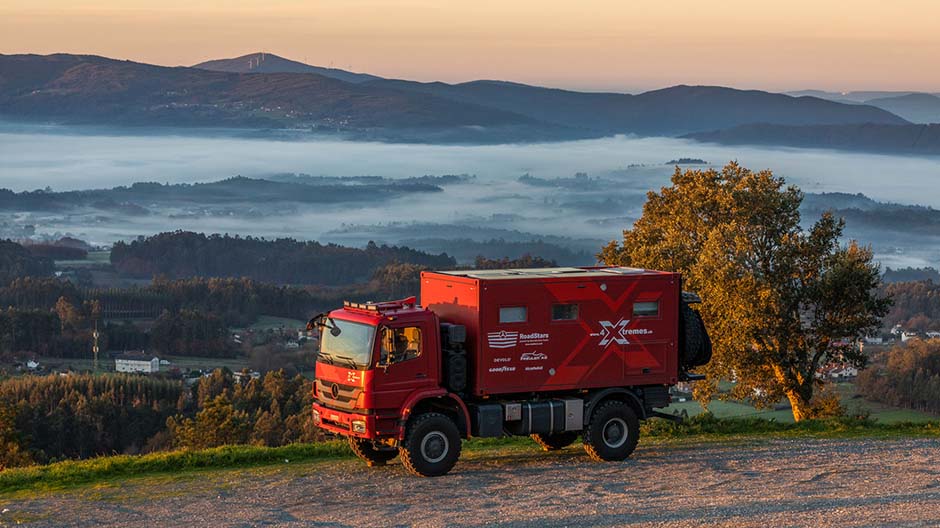
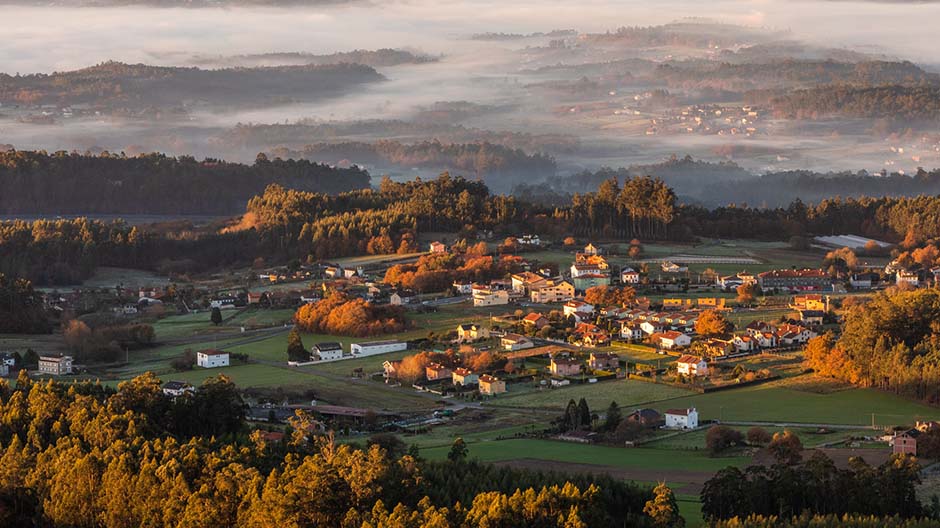
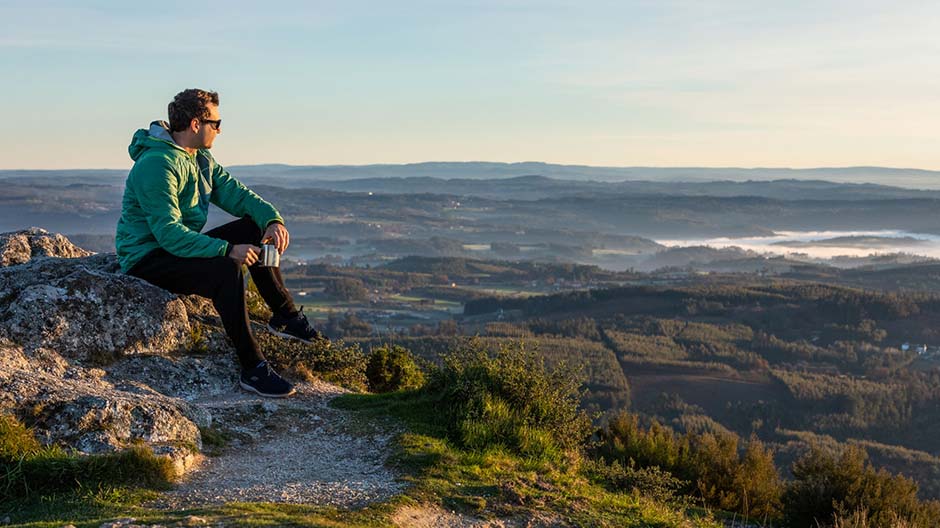
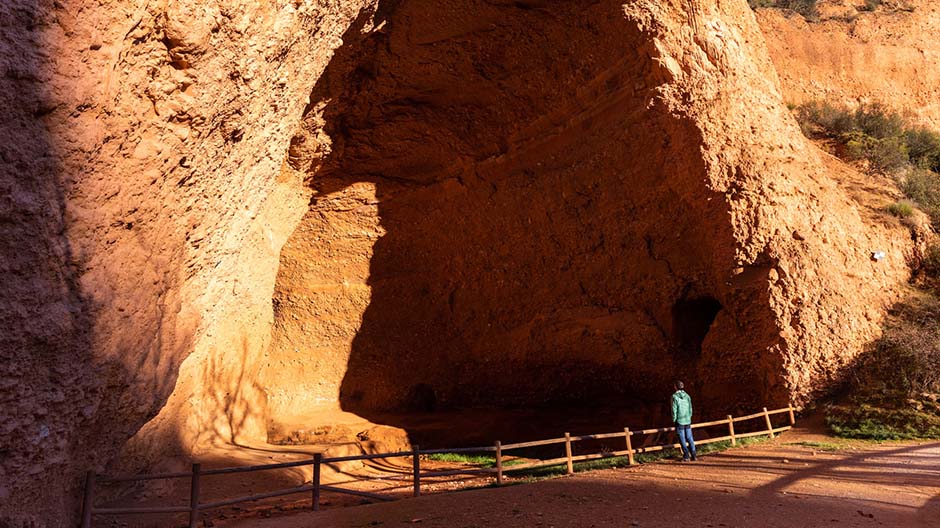
The right place!
As the first city in quite a while, we visited Santiago de Compostela. It will be familiar to many as the destination of the Way of St James, and it is worthwhile visiting the old town, which is a UNESCO World Heritage Site. In spite of this, we decided to camp outside. We normally try to find somewhere to stay the night an hour before it gets dark. Then we know what the surroundings look like and we can look for something else if necessary. This time we arrived on a small mountain at sunset, and it was quickly clear that this was the right place! The steep ascent was limited to 12 tonnes, but that was just enough for the Axor.
This decision proved to be the right one when we woke up the next morning – and experienced the sunrise over a sea of mist with cups of coffee in our hands. Thus refreshed, we continued to chug through the mountains until we reached an extraordinary landscape: Las Médulas in the province of Léon. This is also listed by UNESCO as a World Heritage Site and consists of a number of rock hills. Their idiosyncratic forms are not made by nature, but are the result of mining techniques used by the ancient Romans. They mined gold here by practically boring through the mountains and then flooding them with water.
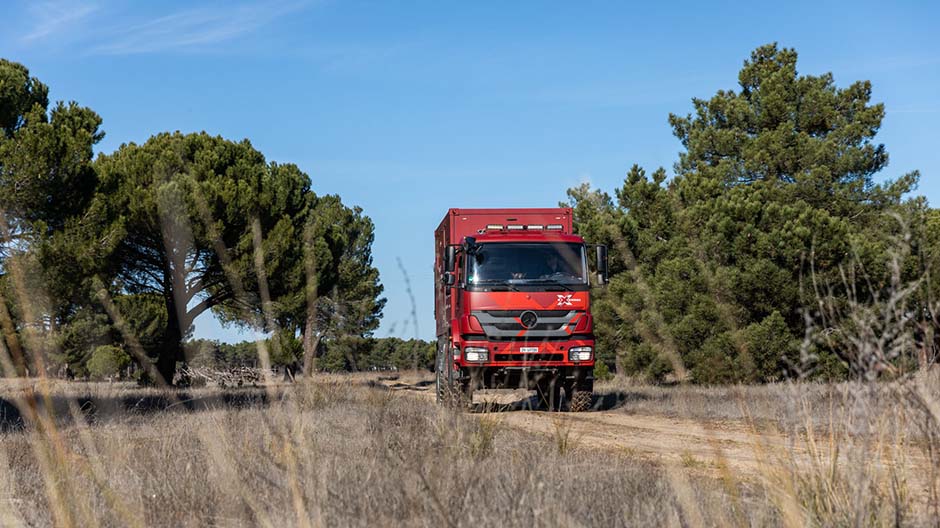
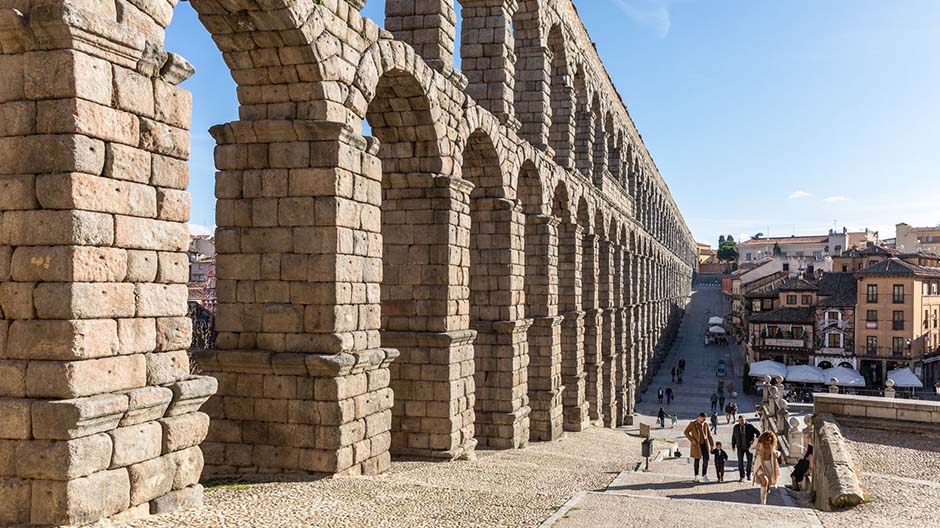
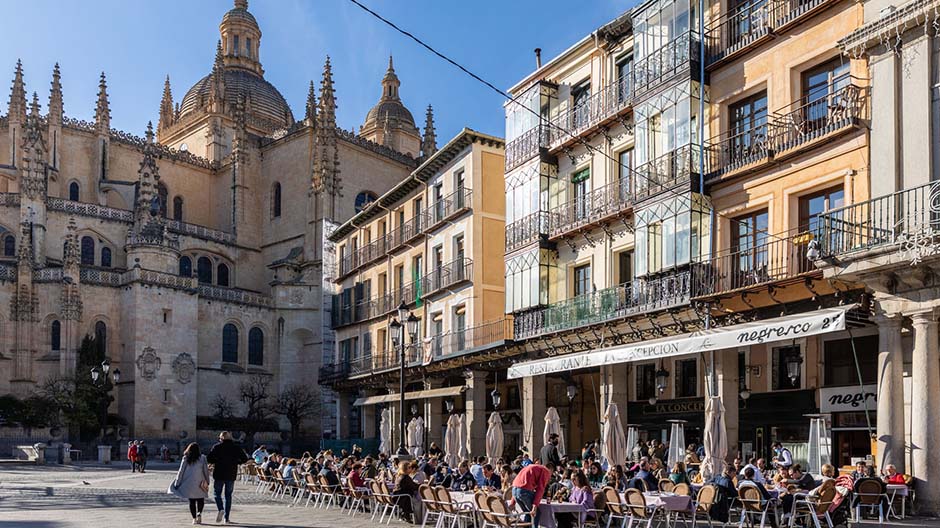
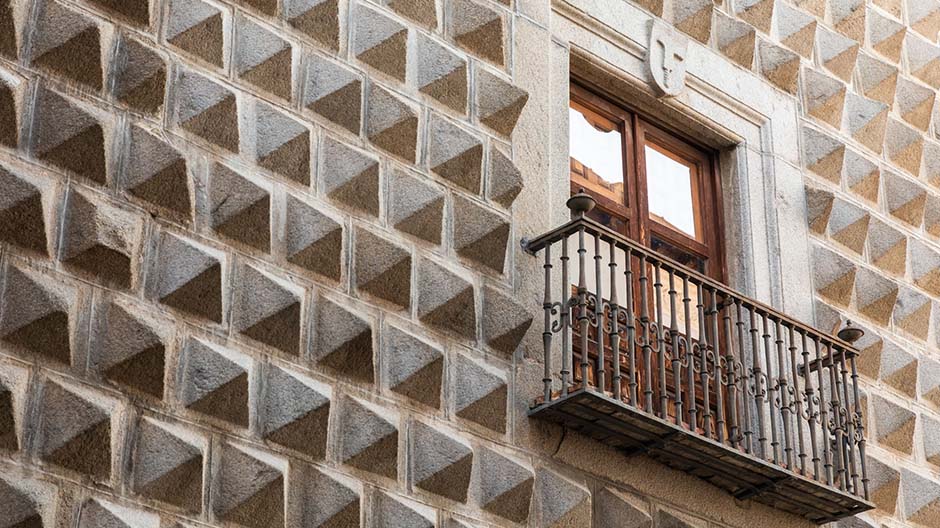
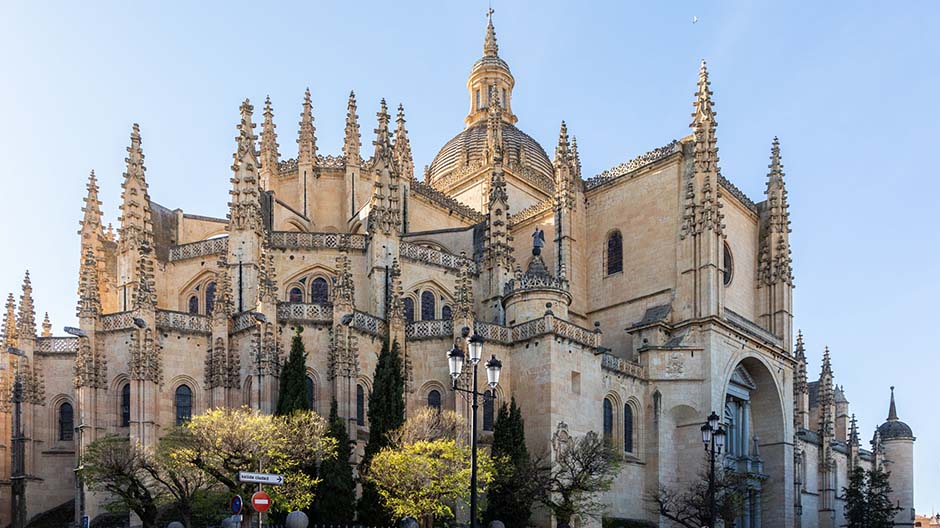
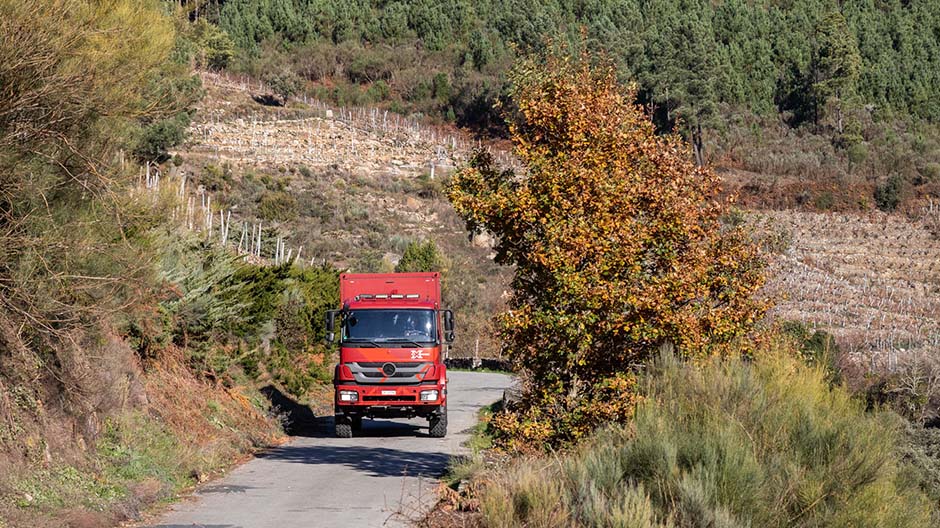
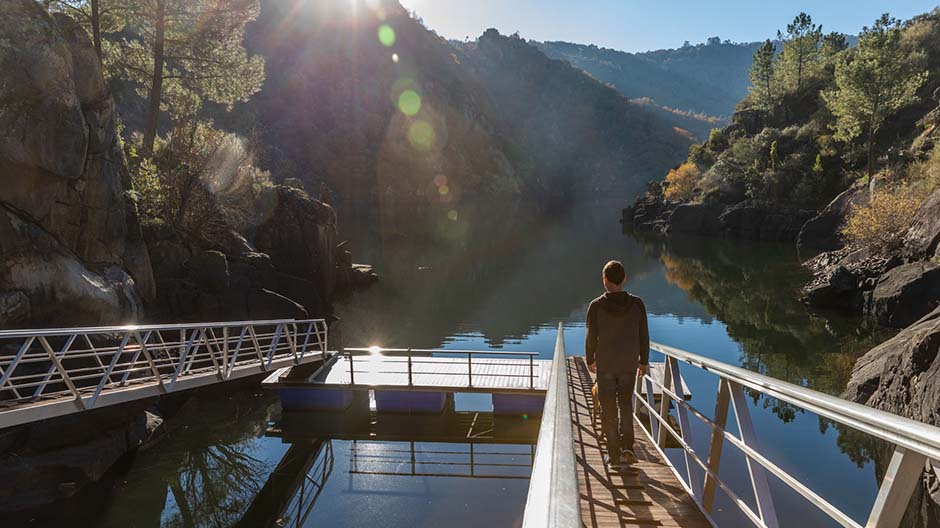
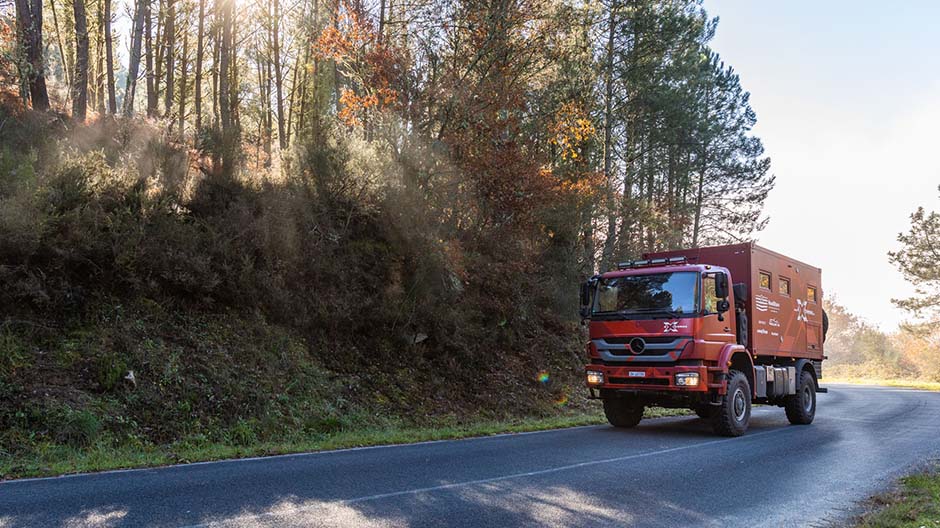
Siberian conditions.
The next night, temperatures dropped to below zero degrees. We don't know exactly by how much. But far enough to find out in the morning that the diesel from the coast was not suitable for winter conditions. An experience that we last had in Siberia almost three years ago on the first “4-Xtremes” tour. Of course, it wasn't as bitterly cold as then here in Spain. With the help of the independent heating, Mike was able to preheat the engine, and after a while we were ready to set off.
The penultimate destination was Segovia. There we parked the Axor at a bullfighting arena that has long since ceased to be in use. We explored the old town on foot: its defining feature is a Roman aqueduct that is almost 2.000 years old. As you might guess, this building is also on UNESCO’s World Heritage List. We were therefore travelling around an area with many sites recognised as being of particular importance.
It soon became clear that Segovia’s old town is bursting at the seams even in winter. All the cafés and restaurants were full and the streets were crowded. The reservoir at which these lines were written serves as a beautiful contrast. A chance to fish, relax in the sun – and recharge our batteries for a stroll through Madrid.
4-Xtremes – The World Tour.
An unparalleled journey.
Andrea and Mike Kammermann have been on tour in their Axor for three years. "4-Xtremes – The World Tour" is the motto of the journey that the two Swiss nationals embarked on in mid-2020 and which they share with the RoadStars community. Keep up to date and don't miss out on any of the stunning destinations visited by the adventurous pair.
You can find the current parts from the “4-Xtremes – The World Tour” series here.
You can find the route of the trip before the crossing to South America here.
Photos: 4-Xtremes




Comment
Please log in to post a comment.
13 comments
Disfrutar de esa zona tan bella de España y si acaso pasáis en vuestra travesía por la zona de La Mancha tenéis unos cafés pagados, basta con avisar antes 😂😉☕️.
Disfrutar pareja !
Disfrutar de esa zona tan bella de España y si acaso pasáis en vuestra travesía por la zona de La Mancha tenéis unos cafés pagados, basta con avisar antes 😂😉☕️.
Disfrutar pareja !
Pero si volvemos a pasar, te avisamos.
Saludos, Andrea y Mike
Pero si volvemos a pasar, te avisamos.
Saludos, Andrea y Mike
Buen viaje !
Buen viaje !
Wir sind schon sehr gespannt auf eure Berichte in 2022 und wünschen euch weiterhin eine gute Reise und immer einen Fingerbreit (temperaturbeständigen 😜) Diesel im Tank!
Haltet die Stoßstange sauber und die Räder am Boden!
Wir sind schon sehr gespannt auf eure Berichte in 2022 und wünschen euch weiterhin eine gute Reise und immer einen Fingerbreit (temperaturbeständigen 😜) Diesel im Tank!
Haltet die Stoßstange sauber und die Räder am Boden!
Wir haben gerade gestern Winterdiesel getankt, haben extra noch beim Tankwart nachgefragt 😂
Viele Grüsse von uns 😊
Wir haben gerade gestern Winterdiesel getankt, haben extra noch beim Tankwart nachgefragt 😂
Viele Grüsse von uns 😊
Danke dafür u. weiterhin schöne, sichere Reiseerlebnisse mit Land/Leuten, wo immer euch der (politische) "CP-Wahnsinn" als Nächstes auch hinverschlagen wird 👍
Danke dafür u. weiterhin schöne, sichere Reiseerlebnisse mit Land/Leuten, wo immer euch der (politische) "CP-Wahnsinn" als Nächstes auch hinverschlagen wird 👍
Du triffst den Nagel auf den Kopf von wegen CP Wahnsinn. Wir sind auch gespannt wo es uns hin verschlagen wird. Der Überraschungseffekt ist also nicht nur bei den Leser, sondern auch bei uns selbst 😂
Viele Grüsse aus Spanien, Andrea und Mike
Du triffst den Nagel auf den Kopf von wegen CP Wahnsinn. Wir sind auch gespannt wo es uns hin verschlagen wird. Der Überraschungseffekt ist also nicht nur bei den Leser, sondern auch bei uns selbst 😂
Viele Grüsse aus Spanien, Andrea und Mike
Viele Grüsse, Andrea & Mike
Viele Grüsse, Andrea & Mike
Es gibt noch sooo viel zu entdecken, wir werden fleissig fotografieren und schreiben.
Liebe Grüsse, Andrea & Mike
Es gibt noch sooo viel zu entdecken, wir werden fleissig fotografieren und schreiben.
Liebe Grüsse, Andrea & Mike
Ich freue mich schon auf mehr!!!
👍👍👍👍👍⛟😎
Ich freue mich schon auf mehr!!!
👍👍👍👍👍⛟😎
Viele Grüsse, Andrea & Mike
Viele Grüsse, Andrea & Mike